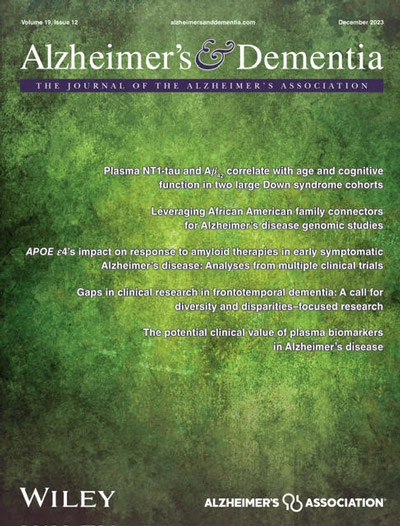Distinct medical and substance use histories associate with cognitive decline in Alzheimer's disease
Abstract
INTRODUCTION
Phenotype clustering reduces patient heterogeneity and could be useful when designing precision clinical trials. We hypothesized that the onset of early cognitive decline in patients would exhibit variance predicated on the clinical history documented prior to an Alzheimer's disease (AD) diagnosis.
METHODS
Self-reported medical and substance use history (i.e., problem history) was used to cluster participants from the National Alzheimer's Coordinating Center (NACC) into distinct subtypes. Linear mixed effects modeling was used to determine the effect of problem history subtype on cognitive decline over 2 years.
RESULTS
Two thousand seven hundred fifty-four individuals were partitioned into three subtypes: minimal (n = 1380), substance use (n = 1038), and cardiovascular (n = 336). The cardiovascular problem history subtype had significantly worse cognitive decline over a 2 year follow-up period (p = 0.013).
DISCUSSION
Our study highlights the need to account for problem history to reduce heterogeneity of outcomes in AD clinical trials.
Highlights
- Clinical data were used to identify subtypes of patients with Alzheimer's disease (AD) in the National Alzheimer's Coordinating Center dataset.
- Three problem history subtypes were found: minimal, substance use, and cardiovascular.
- The mean change in Clinical Dementia Rating Sum of Boxes (CDR-SB) was assessed over a 2 year follow-up.
- The cardiovascular subtype was associated with the worst cognitive decline.
- The magnitude of change in CDR-SB was similar to recent AD clinical trials.


 求助内容:
求助内容: 应助结果提醒方式:
应助结果提醒方式:


